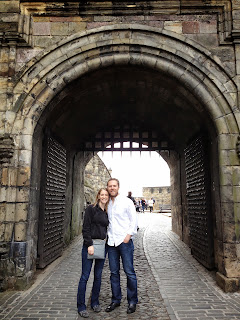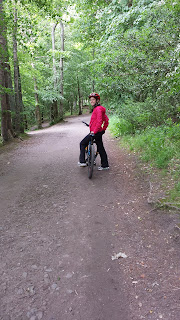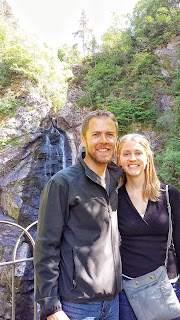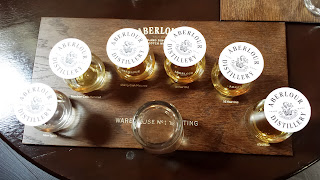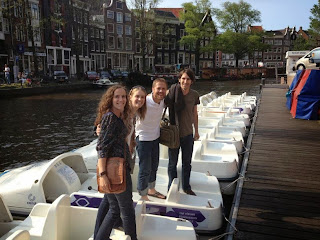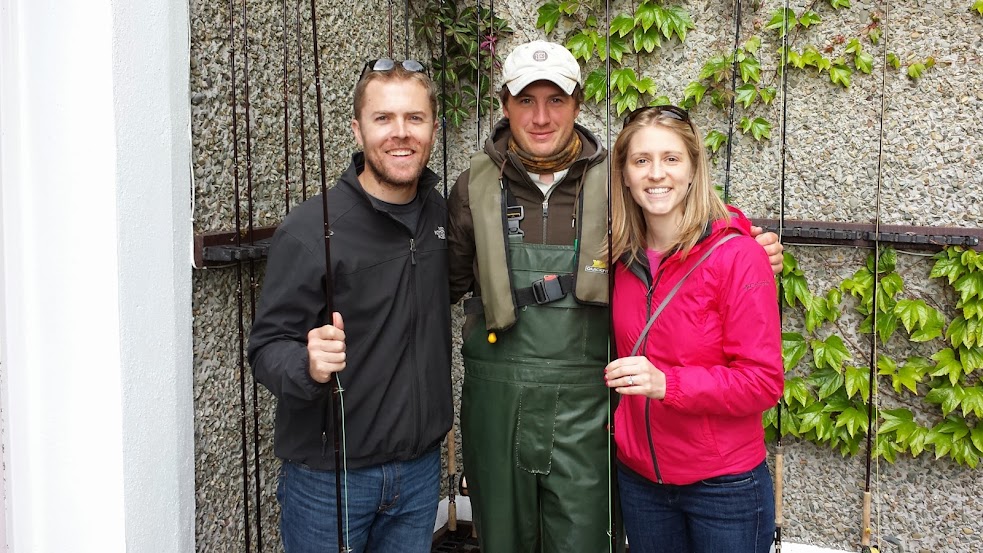We ended our last blog entry upon arriving in the Netherlands. We thoroughly enjoyed our time there, catching a glimpse of both the Amsterdam city life and the surrounding countryside. In Amsterdam, we learned the city is named after they put a dam to prevent the river Amstel (hence the beer) from flooding. We also witnessed the narrowest building in the city, less than 7 feet across. You'll notice a hook at the top of the building, which is common across Amsterdam and used to aid in hoisting large items (e.g., furniture) up to the top floors when moving.
We rented a scooter to navigate the countryside, and found the Netherlands to be quite possibly the easiest and most convenient country to navigate given the extent of bike paths (literally everywhere). We saw numerous windmills and while we learned that Holland owns the title of the tallest people on earth (on average), little did we know how big their shoes are!
On the trip from Porto to Lisbon, we stopped by the Bussaco Forest, which apparently is the densest forest in Europe. We hiked a few trails and stopped by the Palace Hotel, which is quite stunning especially given it's remote location. We also made a stop in Sintra and viewed the Pena Palace, worth googling given the picturesque architecture (unfortunately we visited on a foggy day).
While in Lisbon, we took a walking tour and learned a lot about the city's history. There was an earthquake and tsunami in 1755, which killed 80% of the people and destroyed many of the buildings in the downtown area. They rebuilt afterwards, being the first city to study seismology and incorporate earthquake-safe buildings in their design.
After a few days on our own, we met up with John's parents. We drove out to several small towns and visited ancient ruins. We first went to Evora, which is a small town with a beautiful church and ancient aqueducts. The aqueducts were massive, incredible to think that these were built before modern technology.
From Evora we drove to Estremoz where we stayed in a "pousada", which we were pleased to learn was an ancient castle. We were able to climb the tower, and see far into the Portuguese countryside.
After a few days touring the small towns in Portugal, we returned to Lisbon. There we toured the art museum, which contained a large collection of Egyptian artifacts. We also walked along the waterfront and listened to Fado music, which became popular after the earthquake. We finished our trip in Portugal with a day trip to Obidos, a small village where we walked along the castle walls and took part in a medieval festival.
Portugal is a beautiful country rich with history, but unfortunately struggling with a deep recession and a 50% unemployment rate for people 25-35 years old. Unemployment is so bad that the government is recommending young professionals leave the country for work. The recession has left many abandoned buildings, graffiti ridden streets and landmarks uncared for.
From Portugal, we wished John's parents a wonderful Norwegian cruise, and headed to Spain. We spent a few days in Palma de Mallorca, enjoying the beach and festive Spanish culture. We also gained an appreciation for air conditioning, as the place we were staying had no air conditioning or fan to combat the 100+ degree heat.
From Barcelona we took a day trip to Costa Brava where we rented kayaks. We spent the day kayaking through caves, which were amazingly beautiful and the water turned into a stunning blue/purple color. It was awesome!
After Spain, we began our multi-day trek to South Africa, traveling through Istanbul and Johannesburg before finally settling in Cape Town. We started our time in Cape Town with a trip to the botanical gardens, a large park with extensive variety of species native to the Cape region. Even in their winter this was a really beautiful sight.
We then took a full day wine tour, where we sampled a large variety of wine and took in the sights of South Africa's wine region. They told us to keep an eye out for baboons and while we saw one, fortunately we left unscathed.
We also took a cooking class, making a variety of classic Cape Malay dishes. Cape Malay cuisine originates from Indonesia, but has been modified for British tastes. It was delicious!
Cape Town, and South Africa as a whole, is beautiful. There are incredible sights (including Table Mountain, one of the 7 natural wonders of the world), and the people are very welcoming to tourists. We have noticed that there is still a large amount of racial inequality and segregation. Nelson Mandela started the process of desegregation, but there is still a lot of growth that needs to occur.
From Cape Town, we drove down to the Cape of Good Hope, and up the coast. We stopped to take pictures of ostriches and penguins. The coast is stunning and pristine.
We're currently in Plettenberg, where we've witnessed gorgeous flora, flauna and sunrises!
Next we will travel to the Drankensberg mountains, taking in the mountain views that inspired Tolkien's "Lord of the Rings". From there we head to Kruger national park to see "the big five". We'll spend 4 days on safari, then head to Victoria Falls and then....home!











